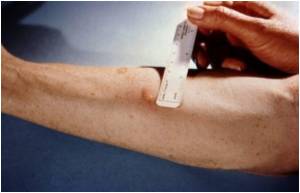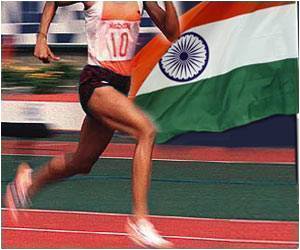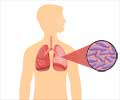Political commitment is needed to reach the Sustainable Development Goals 2030 by reducing TB deaths in people living with HIV.

‘Integrated community-based activities can help diagnose TB in people living with HIV and get the unidentified population into healthcare systems.
’





The panelists were an eclectic mix from the field of affected communities, researchers, the private sector, country representatives, and international public health agencies. Each of these voices is no less important than the other. Hence to be fair, here is a glimpse of their responses (in reverse alphabetical order of their names).Dr Padmapriya Darsini, Senior Scientist, National Institute for Research sustain and increase the gains we have made in the fight against TB, we need a more political commitment to reach SDGs by reducing TB deaths in PLHIV. It takes very long for research findings to reflect in a use of research findings for public health, we will be able to better control TB and HIV.
Although India has made a lot of progress, we still have a long way to go. If we get back the political commitment and the funding to the level when we started initially, things will improve. There should be also more linkages between the government and private sector. This would ease Nomampondo Barnabas, Civil Society Liaison Officer, International Union Against TB and Lung Disease (The Union): "As I have been living with both the diseases, I speak on behalf of both of them. We cannot afford to lose the gains in the fight against HIV and TB. I have been living with HIV since 1997, and was diagnosed with TB in 2006. But I am alive today. When we talk of responses and programs, we look at the figures and often forget the human faces behind them.
Sometimes we tend to work in silos, dealing with one epidemic at a time. This must stop. There is a need for integration. We also need to work closely with the religious and long way in the last decade and having TB 2016 as an integral part of the 21st International AIDS conference bears testimony to it. Even though 6 million deaths of PLHIV due to TB have been averted since 2004, TB is still the leading killer of PLHIV. SDGs give us a unique opportunity of working together with TB and HIV. Eliminating TB disease in PLHIV should be the starting point.
According to the WHO guidelines, the minimum expectation from TB and HIV programs is to provide integrated TB and HIV services to people who need them; and governments will have to brace up their efforts. We need to find ways to harmonize our work and synergize our efforts, as well as increase our efficiencies. We have to look at the patient in a holistic manner. Else we will not be able to achieve SDGs.
Advertisement
CSOs should come forward to reinforce the public health importance of interaction between HIV, TB, and NCDs and to ensure that governments take their responsibility seriously and integrate the WHO recommendations in Dr Christopher Zishiri, Country Director (Zimbabwe), International Union Zimbabwe is largely driven by HIV. Our intervention plans are based on the integration of HIV-TB services. The intervention is a one stop shop like a supermarket. We did a pilot in 2008 to see the feasibility of decentralization of services in 3 high burden sites, which gave very encouraging results regarding anti retroviral therapy (ART) uptake. Currently, we are replicating this strategy in 23 more clinics. Due to integration, uptake of TB-HIV services has increased from 74% to 94%. Use of GeneXpert has reduced turn around time in diagnosis from 1 week rolled out in the whole country.
Advertisement
South Africa is one of the very high TB burdens of, HIV, diabetes, and hypertension. We are developing a model of integrated person-centric care in which a person will have to go to just one clinic (and not 3 or 4) to be taken care of these diseases.
There is a need for linkages between public and private sector. In India, many people go to the private sector as their first point of care, regardless of their economic status. So we are engaging with private pharmacists and some private hospitals for TB and diabetes care, and have seen treatment adherence rates increase to 95% in TB.
CSOs will have to work with local, provincial and national governments for implementing bi-directional screening of people for TB and diabetes. We are working with school children in Brazil, helping them and their parents to take better care of their type 1 diabetes. Schools offer good Thankfully today ART has made it possible for PLHIV to live normally. It is also possible to treat and cure TB. However, we need to remember that there are other co-morbidities of NCDs that people with TB and HIV may have to deal with. So we will have to deal with the entire gamut of diseases that may act as obstacles to our goal of eliminating TB and HIV. It is prudent to remind ourselves of promises made by the governments for sustainable development by committing to achieve SDGs by 2030 - not just to end TB and HIV but also to reduce mortality associated with NCDs by one-third by 2030 - among other promises for integrated development.
Source- Shobha Shukla, CNS (Citizen News Service)
Source-Medindia














